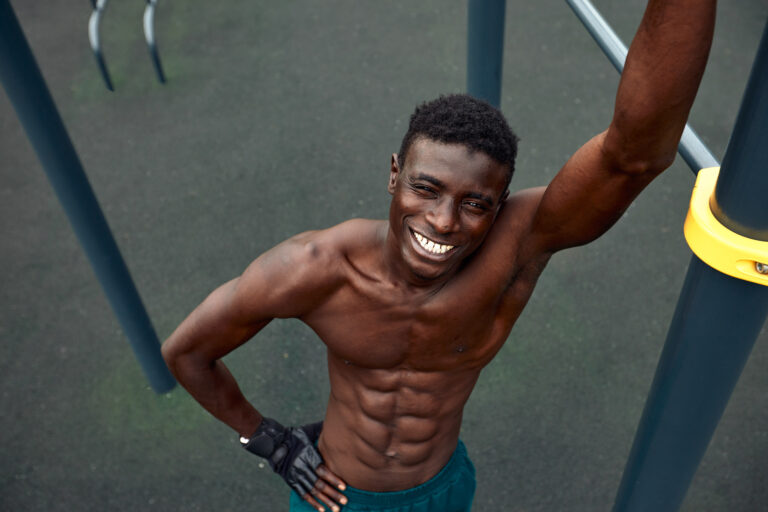What is the Masseter?
The masseter muscle is a critical component of the human jaw, playing a significant role in chewing, biting, and overall jaw movement. As one of the strongest muscles in the human body relative to its size, the masseter is essential for various everyday activities and overall oral health. Understanding its anatomy, physiology, and the factors that affect its health can provide valuable insights for fitness enthusiasts and professionals alike.
Anatomy of the Masseter
The masseter muscle is located in the cheek area, extending from the zygomatic arch (cheekbone) to the mandible (lower jawbone). It is one of the primary muscles involved in the process of mastication, or chewing. The masseter can be divided into two distinct parts: the superficial and the deep portions.
The superficial portion of the masseter originates from the maxillary process of the zygomatic bone and inserts into the angle and lateral surface of the mandible. This part is more prominent and contributes significantly to the muscle’s overall power. The deep portion, on the other hand, originates from the zygomatic arch and inserts into the upper half of the ramus and the coronoid process of the mandible. This deeper section provides additional stability and strength.
In comparison to other facial muscles, the masseter is notably thick and dense, contributing to its powerful force. The muscle fibers of the masseter are organized in a way that allows for significant mechanical advantage during the process of chewing. This unique structure enables the masseter to generate considerable force, necessary for breaking down food.
The masseter works in conjunction with other muscles of mastication, including the temporalis, medial pterygoid, and lateral pterygoid muscles. Together, these muscles coordinate the complex movements required for effective chewing and jaw movement. The masseter’s strategic placement and robust structure make it indispensable for proper oral function and overall facial aesthetics.
Physiology of the Masseter
The primary function of the masseter muscle is to facilitate the elevation of the mandible, allowing for the closing of the mouth. This action is vital for chewing, grinding, and crushing food, which are essential steps in the digestive process. The masseter’s powerful contractions are capable of generating significant bite force, crucial for processing a wide variety of foods.
In addition to its role in chewing, the masseter also plays a part in maintaining proper occlusion, or the alignment of the teeth when the jaws are closed. Proper occlusion is necessary for effective chewing and overall dental health. Any imbalance in the masseter muscle can lead to malocclusion, which can cause a range of dental and jaw issues.
The masseter muscle’s function is not limited to static force generation. It also plays a dynamic role in various jaw movements, including lateral (side-to-side) movements and protrusion (forward movement) of the jaw. These movements are essential for grinding food and achieving a thorough breakdown before swallowing.
The masseter muscle’s efficiency is enhanced by its unique fiber composition. The muscle contains a high proportion of slow-twitch muscle fibers, which are highly resistant to fatigue. This characteristic allows the masseter to sustain prolonged contractions necessary for continuous chewing activities. The presence of fast-twitch fibers, although in smaller proportions, provides the muscle with the ability to generate quick, forceful bites when necessary.
Neural Control
The masseter muscle is innervated by the mandibular branch of the trigeminal nerve (cranial nerve V). This nerve is responsible for transmitting motor signals from the brain to the masseter, enabling it to contract and produce movement. Sensory signals from the masseter are also transmitted back to the brain via this nerve, providing feedback on the muscle’s status and position.
The trigeminal nerve’s role in controlling the masseter muscle is crucial for coordinating the complex movements required for chewing. Proper neural control ensures that the masseter contracts with the appropriate force and timing, allowing for efficient and effective mastication. Any disruption in neural control can lead to issues such as weakness, incoordination, or even paralysis of the masseter muscle.
The brain’s control over the masseter is highly refined, allowing for precise adjustments in force and movement. This precision is necessary for handling different textures and sizes of food, which require varying levels of bite force and jaw movement. The neural pathways involved in controlling the masseter are also involved in reflexes that protect the teeth and jaw from damage, such as the jaw jerk reflex and the bite reflex.
Proper neural health is essential for maintaining the masseter muscle’s function. Conditions that affect the trigeminal nerve, such as trigeminal neuralgia or nerve injuries, can significantly impact the masseter’s performance. Ensuring the health of the neural pathways that control the masseter is vital for overall oral function and health.
Development and Growth
The masseter muscle develops early in life and continues to grow and strengthen as a person matures. In infancy, the masseter is relatively underdeveloped, reflecting the limited need for powerful chewing in early feeding stages. However, as the child transitions to solid foods, the masseter begins to grow in response to increased functional demands.
During adolescence, the masseter muscle undergoes significant growth, coinciding with the overall development of the jaw and facial structures. This period of growth is influenced by genetic factors, hormonal changes, and dietary habits. A diet that includes a variety of textures and requires substantial chewing can promote the development of a stronger masseter muscle.
In adulthood, the masseter muscle reaches its full development and continues to adapt to the demands placed on it. Regular use and exercise can maintain the muscle’s strength and function, while disuse or a diet consisting predominantly of soft foods can lead to atrophy and weakening. Just like other skeletal muscles, the masseter benefits from consistent activity and resistance to maintain its health.
Genetics also play a significant role in the development and growth of the masseter muscle. Some individuals may have naturally stronger or more prominent masseter muscles due to inherited traits. These genetic factors can influence the muscle’s size, strength, and overall appearance. Understanding the genetic component can help in tailoring fitness and health strategies to individual needs.
Common Disorders and Pathologies
The masseter muscle, like any other muscle in the body, is susceptible to various disorders and pathologies that can impact its function and overall health. One of the most common issues affecting the masseter is bruxism, a condition characterized by excessive grinding or clenching of the teeth. Bruxism often occurs during sleep and can lead to hypertrophy (enlargement) of the masseter muscle, along with significant wear and tear on the teeth.
Another prevalent condition involving the masseter is temporomandibular joint disorder (TMJ). TMJ disorders encompass a range of problems related to the temporomandibular joint, which connects the jawbone to the skull. Symptoms of TMJ disorders can include pain, clicking or popping sounds, and difficulty in moving the jaw. The masseter muscle often becomes tense and overworked in individuals with TMJ disorders, contributing to the discomfort and dysfunction associated with the condition.
Myofascial pain syndrome is another disorder that can affect the masseter muscle. This condition is characterized by the presence of trigger points, which are sensitive areas within the muscle that can cause referred pain. Myofascial pain syndrome in the masseter can result in headaches, facial pain, and difficulty in chewing. Treatment often involves techniques to release the trigger points and alleviate the muscle tension.
Trauma to the jaw or face can also impact the masseter muscle, leading to strains, tears, or contusions. Such injuries can result from accidents, sports activities, or physical altercations. The recovery process for muscle injuries typically involves rest, physical therapy, and, in some cases, surgical intervention.
Proper diagnosis and treatment of masseter-related disorders are essential for restoring function and reducing discomfort. Dental professionals, physical therapists, and medical doctors often work together to address these conditions, employing a combination of therapeutic exercises, medications, and lifestyle modifications.
Therapeutic and Fitness Approaches
Maintaining the health and strength of the masseter muscle is important not only for proper jaw function but also for overall oral health and quality of life. Various exercises and therapeutic approaches can help strengthen and relax the masseter, addressing both functional and aesthetic concerns.
Jaw exercises designed to target the masseter muscle can help improve its strength and flexibility. One simple exercise involves opening and closing the mouth slowly while applying gentle resistance with the hand. This resistance training can enhance the masseter’s endurance and force-generating capacity. Another effective exercise is performing controlled lateral jaw movements to engage and stretch the muscle fibers in different directions.
For individuals experiencing tightness or pain in the masseter muscle, massage therapy can be beneficial. Massaging the masseter using gentle, circular motions can help release tension and improve blood flow to the area. This technique can be performed using the fingers or with the assistance of a massage therapist who specializes in orofacial therapy.
Physical therapy interventions for the masseter often include techniques to improve jaw alignment and reduce muscle tension. Therapists may use manual therapy, ultrasound, or electrical stimulation to address underlying issues contributing to masseter dysfunction. Additionally, they may provide guidance on posture and ergonomic adjustments to minimize strain on the jaw during daily activities.
Incorporating dietary considerations is also important for masseter health. A balanced diet that includes a variety of textures can stimulate the masseter muscle and prevent atrophy. Chewing tougher foods, such as raw vegetables and lean meats, can provide the necessary resistance to keep the masseter engaged and strong. Staying hydrated is equally important, as dehydration can lead to muscle cramps and discomfort.
Overall, a holistic approach that combines exercise, therapy, and nutrition can effectively maintain and enhance the health of the masseter muscle. These strategies not only improve jaw function but also contribute to overall well-being.
Role in Aesthetics and Surgery
The masseter muscle significantly influences facial aesthetics due to its location and size. A well-developed masseter can create a defined and prominent jawline, which is
often associated with attractiveness and a strong facial structure. Conversely, hypertrophy of the masseter can lead to a more square-shaped face, which some individuals may find less desirable.
In recent years, cosmetic procedures targeting the masseter muscle have gained popularity. One common procedure is masseter reduction, which involves the use of botulinum toxin (Botox) injections to relax and shrink the muscle. This treatment can help individuals achieve a more tapered and aesthetically pleasing facial contour. The effects of Botox injections are temporary, typically lasting for several months, and require repeated treatments to maintain the desired results.
Surgical interventions are also available for those seeking more permanent changes to the masseter muscle. Masseter reduction surgery, also known as jawline contouring or mandibular contouring, involves the removal or reshaping of a portion of the masseter muscle. This procedure can create a slimmer facial appearance and is often performed under general anesthesia. Recovery from masseter reduction surgery can take several weeks, during which time patients must follow specific post-operative care instructions to ensure optimal healing.
While cosmetic procedures targeting the masseter can enhance facial aesthetics, it is important to consider potential risks and complications. These may include asymmetry, changes in facial expression, and the possibility of nerve damage. Consulting with a qualified and experienced cosmetic surgeon is essential to achieve safe and satisfactory outcomes.
Beyond cosmetic considerations, surgical interventions may also be necessary for medical reasons. For example, individuals with severe TMJ disorders or traumatic injuries to the masseter may require surgical repair or reconstruction. These procedures aim to restore proper function and alleviate pain, contributing to improved quality of life.
Key Takeaways
The masseter muscle is a vital component of the human jaw, essential for chewing, biting, and maintaining proper jaw alignment. Its unique structure and powerful function make it a key player in oral health and facial aesthetics. Understanding the anatomy, physiology, and potential disorders of the masseter can help in maintaining its health through targeted exercises, therapeutic interventions, and, when necessary, surgical procedures. By prioritizing the health of the masseter muscle, individuals can improve their overall well-being and enjoy better functionality and appearance.









